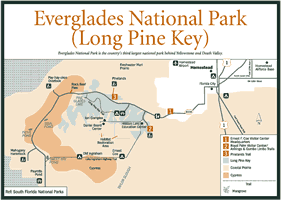
[Fig. 12(1)] The destruction of the park's original visitor center by Hurricane
Andrew in 1992 provided the Park Service with an opportunity to construct a
brand new, state-of-the-art facility. Located just outside the main entrance
to the park, the visitor center is the beginning of your connection to the
Everglades.
The bright, airy facility, dedicated in December 1996, educates with wall-sized murals, interactive video monitors, and small alcoves that surround the visitor with both the sounds and sights of the Everglades. An intriguing, 15-minute film introduces the visitor to some of the wildlife, and provides a brief history of the park's relationship to the rest of South Florida and the millions of people who now make it their home.
A large 360-degree diorama tells one of the most important stories of the Everglades—the role of the alligator as water-hole custodian. During the dry season, these ancient reptiles settle into small, water-filled solution holes in the limerock. With their great tails they sweep out the mud and debris, keeping the gator hole clear and maintaining a place of refuge for the area's wildlife until the rains return.
The visitor center also provides an easy introduction to the varied and distinct habitat types found within the borders of the park. There's the Florida Bay estuary with its 800 square miles of seagrass and marine bottom, which shelters the small fish and shellfish that in turn, support the higher invertebrates in the bay.
Coastal prairies are located just above the tidal flats of Florida Bay. Arid regions of salt-tolerant vegetation, the prairies are shaped by periodic hurricane-caused flooding. This land is characterized by succulents and other low-growing desert-type plants that can withstand the harsh conditions.
Mangrove forests are found in tidal estuaries where fresh water from the Everglades mixes with salt water from the Gulf of Mexico. The estuary system is a valuable nursery for pink shrimp and fish. During dry months an increased number of birds rely on the estuary for a place to feed. Many species also nest in the mangroves.
Freshwater marl prairies, which tend to border the deeper sloughs, are large areas characterized by marl sediments, a calcareous material that settles on the limestone. The marl allows slow seepage of the water in to the aquifer below, but not drainage.
Sloughs are the deeper and faster-flowing centers of a broad marshy river. Even the fast flow moves at a turtle pace of 100 feet per day. Dotted with tree islands called hammocks or heads, sloughs channel life-protecting waters from north to south. Everglades National Park contains two distinct sloughs, the Shark Valley Slough, which is the true "River of Grass" and Taylor Slough, a narrow eastern branch of the river.
Cypress domes are dense clusters of cypress trees growing in water-filled depressions in the landscape. Deciduous conifers, cypress trees can survive in standing water. The dome shape results from trees in the deeper soil at the center of a depression growing taller than those on the outside. Also, scattered throughout the park are stunted cypress trees, called dwarf cypress, that are a result of poor soil and dry land. While they are only a few feet tall, they can be as old as their stately brothers.
Hardwood hammocks are dense stands of hardwood trees that grow on natural rises of only a few inches. The flowing water in the slough causes many of the islands to have a teardrop shape. In hammocks, many tropical plants such as the West Indian mahogany, gumbo-limbo, and cocoplum (Chrysobalanus icaco) grow alongside more temperate species such as live oak and red maple (Acer rubrum).
Because of their slight elevation, hammocks rarely flood. Over many years, acids from decaying plants dissolve the limestone around each tree island, forming a natural moat and thus further protecting the trees from fire. Shaded from the sun by the tall trees, ferns and airplants thrive in the moisture-laden air inside the canopy of the hammock.
Slash pines are the dominant plants in the pine forest, which sits on top of limestone ridges running into the eastern side of the park. More than 200 varieties of tropical plants inhabit the pinelands understory, making it the most diverse habitat in the Everglades.
The pines root in the dirt-filled cracks and crevices found in the jagged bedrock. Fire, often caused by lightning strikes, is another essential condition for the survival of the pine community. It controls the spread of hardwoods that, if left unchecked, would eventually shade the forest floor, preventing the growth of new pine trees. The multilayered bark of the pine trees allows them to survive all but the hottest fires with little more than a scorching.
Be sure to check the "What to see. Where to Look" display before heading into the park. The regularly updated display uses symbol magnets on a map of the park to report recent sightings of such species as alligators, wading birds, panthers, crocodiles, roseate spoonbills, manatees, woodstorks, and osprey. Another "Everglades Update" located in the small alcove in front of the visitor center discloses the best places for wildlife viewing for each season.
You can even begin your wildlife watching right on the grounds of the visitor center. Look for tricolored herons and great blue herons showing an interest in the fish-filled waters. Largemouth bass and other sunfish, including bluegills and redear sunfish (Lepomis microlophus), are easy to see from the footbridge leading into the visitor center.
Before leaving the visitor center you may wish to take moment to look at the extraordinary bronze statue of a Florida panther standing next to the parking lot. It's dedicated to the park's strongest champion, and the namesake of the visitor center, Ernest F. Coe.